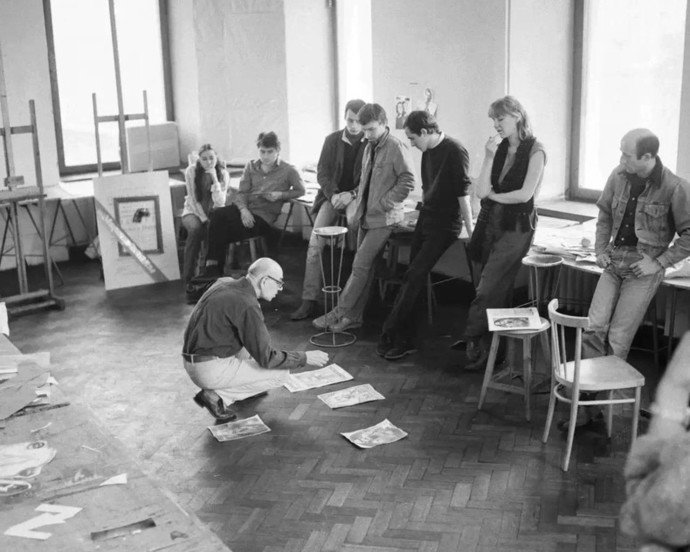Introducing the ‘Polish School of Posters’
Photo: Zbyszko Siemaszko, travellers waiting for a train in Warsaw Central Railway Station, 1963
“All (Polish) posters should be designed by individual artists who should have freedom of interpretation and artistic expression.”
The Background
Posters from the Polish School of Posters were produced in a unique moment in history. After the Second World War, the Polish People’s Republic was placed under strict Soviet rule and suffered great repression and hardship. Yet from that sprang an explosion of creativity which lasted for decades.
During that time posters were one of the only permitted artistic outlets by the ruling Communist state. Keen to avoid an uprising of the depressed population, they Soviet rulers relied on this relatively cheap means of propaganda to promote the ‘feel-good’ work of their Ministry of Art & Culture (films in cinemas, theatre productions, music festivals, exhibitions, opera, ballet and the circus, for example).
Despite this, the key pioneers of the Polish School of Posters, said that they would only design the State’s posters if they did not have to conform to the Social Realist style. Perhaps surprisingly, the State agreed. Instead the artists, who had to be highly trained from the best art schools to stand a chance of winning a commission, were simply instructed to reject Western values.
And so, the Polish poster artists flourished. Successive generations trained under each other, collaborating and sharing ideas. They broke all design conventions with their highly expressive interpretive style. For decades Poland’s greatest painters and graphic designers focussed their talents on the specialist medium of posters.
The movement peaked during the fifties, sixties and seventies when the most collectable Polish posters were designed.
Why the ‘Polish School’ of Posters?
The term ‘Poster School’ was first coined by Polish artist Jan Lenica in an article he wrote during the sixties.
There is a poetic storytelling in Polish posters which goes beneath the surface image. They never dumbed down to the (too often assumed) stupidity of the ‘man on the street’. Instead, over time, the artists found many clever and subtle ways to introduce subversive thinking into their work with symbolism and metaphors.
Polish posters taught everybody an appreciation of fine art and the power of art to leave us thinking for ourselves .
The artists could never show any political views in their work, but they never stopped fighting for the values they believed in. Instead of violence or force, they used hidden meaning to do so with humour and beauty.
As a result, the Polish posters from this era are highly original, bold and witty. When you compare the posters to those being produced by Polish artists’ international peers, you can see how ground-breaking they were and ahead of their time.
Professor Henryk Tomaszewski teaching at The Warsaw Academy of Fine Arts | Courtesy of Power Station of Art
The Polish Posters’ Power + Legacy
Polish posters were printed in strict runs and never designed to be kept, so any that survive have been lovingly salvaged along the way from the streets, cinemas or theatres where they were displayed.
Through Projekt 26 we want to do all we can to preserve the midcentury graphic gems which redefined poster design. And recognise and celebrate the work of these artists behind them - many of whom are sadly no longer alive.
For us, the posters resonate just as strongly today as they would have when they were designed.
The Polish poster endures today as a piece of art. But it also comes with an idea and is designed to talk to you. Polish posters are designed to stop you in your tracks. To make you think. To make you feel. And it’s the fact that they bring us joy and hope that we love the most.
Produced after some of Europe’s darkest years, Polish posters are symbols of hope which embody incredible humanity and an inspirational and irrepressible spirit for freedom and survival.




